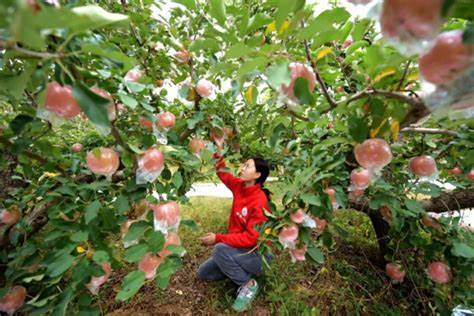In recent years, more and more graduate schools in China have sent their students to stay for a
long period of time at the “science and technology backyards” in the front line of agricultural
production in rural areas so that they can study and work out solutions to the practical
problems for farmers based on their theoretical knowledge.
Each “science and technology backyard” is equipped with a supervisor of master’s degree
program in agriculture and at least two postgraduate students studying for a master’s degree in
agriculture. The supervisor, who has outstanding scholarship and strong practical abilities,
serves as the chief expert of the team, which stays at the “science and technology backyard”
for no less than 120 days a year.
Each of these “backyards” is sponsored by either leading enterprise, research institute,
association, cooperative, industrial park or local government, which guarantees the teachers’
and students’ board and lodging, pay their transportation expenses, and provide allowances
for the students.
Every “backyard” focuses on the industry of one of the major agricultural products of the
county it is in, and helps local farmers solve the practical problems they encounter in
agricultural production.
Farmers have often lined up before dawn to seek advice on crop diseases at the “science and
technology backyard” where a team led by Zhang Fusuo, an academician with the Chinese
Academy of Engineering, has been stationed.
Since 2009, Zhang has led a team composed of teachers and graduate students from the China
Agricultural University (CAU) to rural areas. They spend over 300 days a year in villages and
eat, live, and work together with farmers, finally gaining first-hand experience with farmers
and agricultural production and making “science and technology backyard” popular among
farmers.
A platform that facilitates communication and interaction among the government, enterprises,
farmers and technologies has gradually taken shape in these “science and technology
backyards”, driving continuous innovation in and application of technologies, said Zhang.
The key of modernization of agriculture and rural areas lies in technologies and talents, which
are exactly the treasure brought by “science and technology backyards” to rural areas.
These “backyards” allow teachers and students to translate scientific and technological
achievements into techniques that can be readily used by farmers at a faster pace and help
students put their knowledge to good use and enhance their capabilities in practice.
They provide a solution to the disjunction between scientific research and production needs,
between scientific and technological personnel and farmers, and between talent cultivation
and social needs.
Through the platform, students have gained a better understanding of agricultural production
process at first hand, carried out scientific research based on farmers’ needs, and improved
their capabilities to bear hardships and stand hard work as well as their communication skills.
In addition, the talent training model of the “science and technology backyard” helps promote
the combination of imparting knowledge and all-round education, fields and classrooms,
theory and practice, scientific research and promotion, innovation and service, and motivate
Chinese universities and colleges with agriculture-related degree programs to deepen the
reform of their postgraduate educational models.
By improving farmers’ scientific literacy through activities carried out to promote
technologies, train farmers in farming techniques, and popularize scientific knowledge, the
“science and technology backyards” have cultivated local talents for rural revitalization in
Chinese villages.
On the other hand, the graduate students stationed at these “backyards” are not only learners
and beneficiaries of “lessons given in the fields”, but also service providers for and
contributors to rural revitalization.
For over one decade, more than 800 supervisors from inside and outside universities and over
1,500 graduate students have participated in the construction and operation of the “science
and technology backyards”. The activities they conducted in the fields have benefited over
80,000 people. A total of more than 200,000 farmers have been trained offline thanks to these
“backyards”.
Over the past more than 10 years, more than 30 colleges and universities in China have
established over 300 “science and technology backyards”, which have covered 135 industrial
systems, provided agricultural production demonstration in farmlands with a total area of
more than one million mu (about 66,667 hectares), and trained more than 200,000 farmers.
These “science and technology backyards” have cooperated with 63 cooperatives and 37
companies and jointly promoted the application of technologies in 560 million mu of
farmland.
As the postgraduate cultivation model of the “science and technology backyards” is
constantly promoted, more of such “backyards” are expected to be built in the vast
countryside of China and bring a better future to rural areas.



